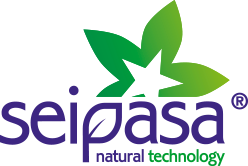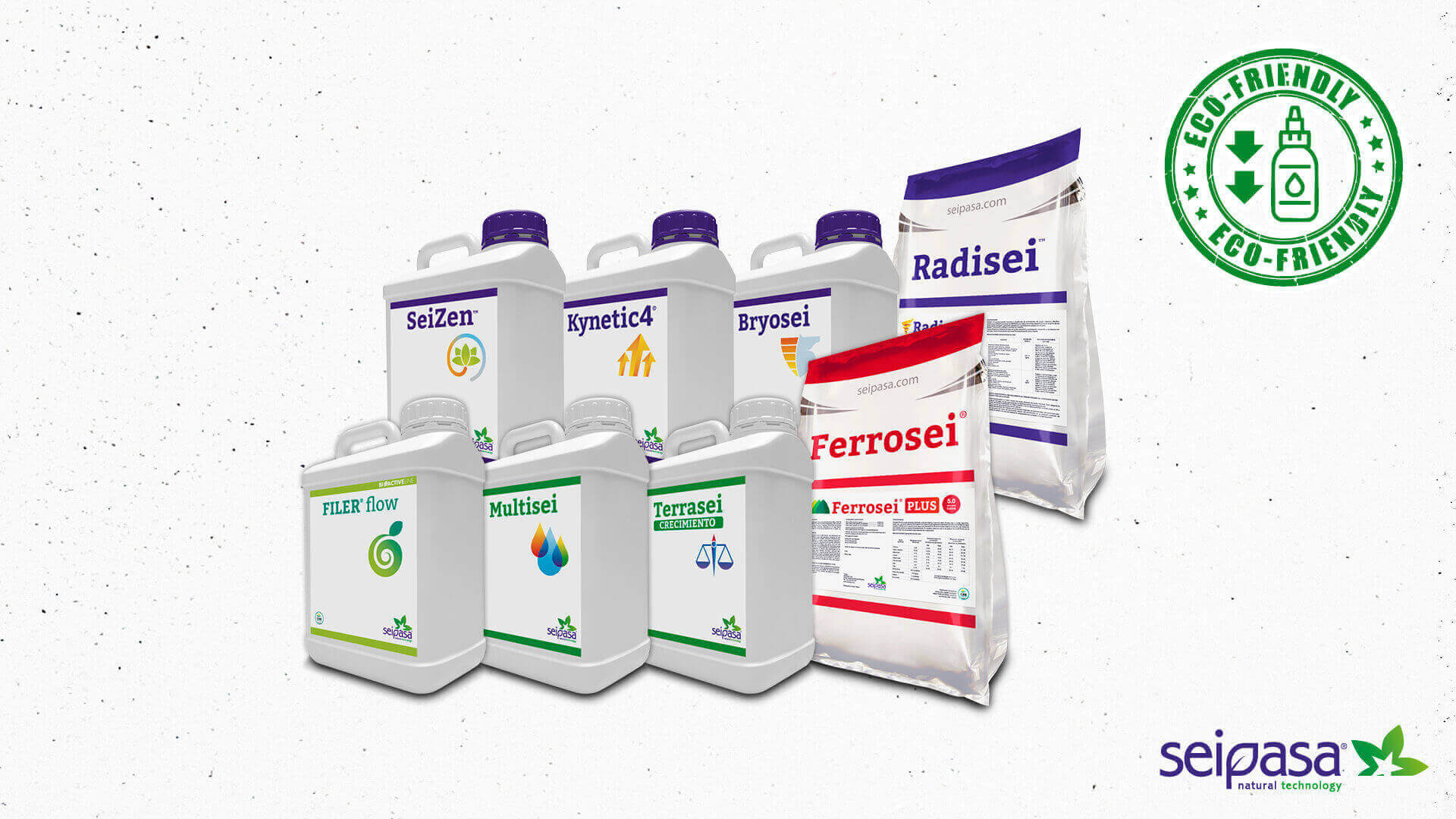Seipasa, a Spanish company specialising in the development, formulation and production of bioinsecticide, biofungicide, biostimulant and nutritional treatments for agriculture, has taken another step forward in its sustainability strategy with the launch of a new label design for its biostimulant, nutritional and chelate product lines, in addition to the Bioactive line.
The labels for the biocontrol product family remain unchanged and keep their original white colour, as the use and consumption of printing inks has already been optimised to the maximum.
The new labels feature an efficient design that reduces ink consumption by 62% compared to the previous design, significantly reducing resource use and environmental impact. This measure is part of Seipasa’s commitment to sustainability and is in line with its philosophy of offering innovative and environmentally friendly solutions.
It is worth remembering that the inks that Seipasa already uses to print its labels are water-based, a characteristic that makes them less toxic and less harmful to the environment than solvent-based inks.
This reduction in the amount of ink used in the new label design translates into a 61% reduction in the CO2 emissions associated with the process, taking into account the emission factor for each label.
The initiative will also allow Seipasa to strengthen the presence and image of its products at the point of sale, in addition to adapting to the changes brought about by the new European regulations in this area.
New visual personality
In the case of biostimulants, the new label is now white with two horizontal purple stripes at the top and bottom. The purple colour is also used on the bottle cap, leaving the original white and significantly changing the way the product is presented to the public.
The nutritional and Bioactive lines also have white labels, but the horizontal stripes are green. The shade varies according to the product line.
The solid references sold in 1 or 5 kg bags have the same visual design, with a different colour depending on the line to which they belong.
María del Puig Mora, Seipasa’s Quality and Environment director, emphasises the importance of this change: “At Seipasa we see sustainability as a transversal value that permeates all our activities. We focus not only on developing natural and efficient products, but also on improving all the processes involved with their production and marketing. By reducing the amount of ink used in our labels by 62%, we are taking a further step towards preserving the environment”.
Design in line with corporate values
In addition to its ecological impact, Seipasa’s new labelling has been designed to improve the presence and visibility of the products on the distributor’s shelf and at the point of sale. The new image is visually clearer, making it easier to identify the products and providing more accessible information for farmers. The redesign retains the essence of the brand, reinforcing its identity and offering a more modern and attractive design.
“Our products are present in more than 30 countries around the world and we know how important image is in an increasingly competitive market,” adds María del Puig Mora. “This change not only makes us more sustainable, but also allows us to improve communication with our customers and distributors, making it easier to identify and recognise our products anywhere in the world”.
Adapting to new European regulations
In addition, this labelling update allows Seipasa to adapt to Regulation (EU) 2024/2865 of the Parliament and of the Council of 23 October 2024 amending Regulation (EC) 1272/2008 on classification, labelling and packaging of substances and mixtures.
In this way, Seipasa is ahead of schedule and ensures compliance with the regulatory requirements before their implementation date in January 2027, and reaffirms its commitment to legality and safety in all its processes.
With this initiative, the company continues to advance its ESG (Environmental, Social and Governance) strategy, developing solutions that not only improve crop quality but also contribute to a more sustainable future.


